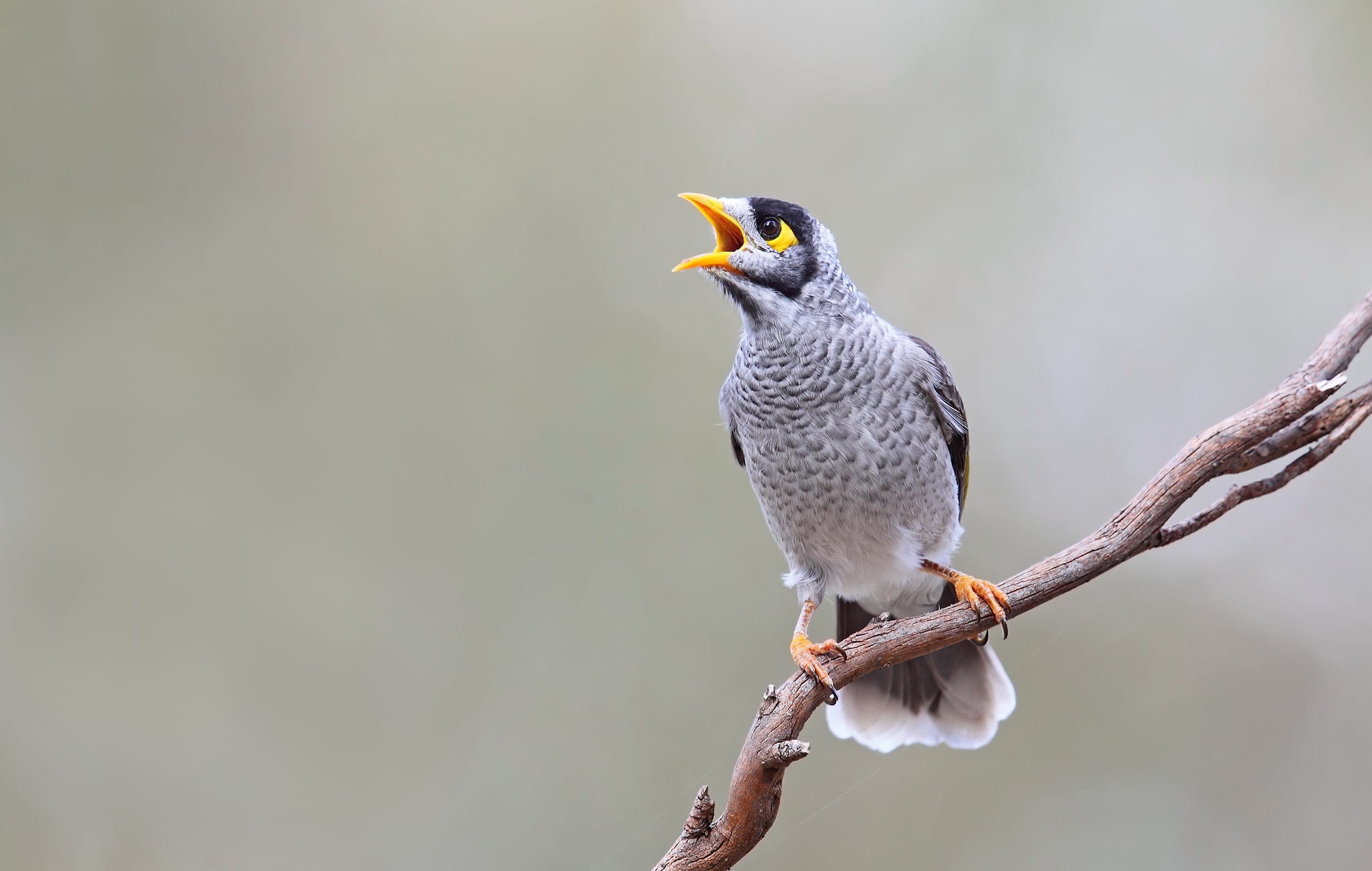Common Myna (Acridotheres tristis)
The Common Myna (or Indian Myna) is a species of bird originally from Asia that was brought to Australia in the late 1800s. They have since spread across the eastern coast of Australia and out west along highways where they predominantly inhabit urban areas.
The Common Myna is known to be an aggressive bird that poses a great threat to many native birds including threatened species such as the Glossy-Black Cockatoo and the Pink Cockatoo. Mynas can and will quickly take over areas and drive out native species. It is important to slow the spread and prevent Common Mynas dominating native ecosystems.
What does the Common Myna look like?
Common Mynas are an introduced species but can be confused with the native Noisy Miner. It is important to be able to recognise the difference between the two species.
Similarities:
- Shape and size.
- Yellow beak and skin around eye.
- Black on the head
- Range from 23 to 28 cm.
Differences:
- The Common Myna has a dark brown body while the Noisy Miner is mottled grey.
- The Common Myna has a white patch on the wing while the Noisy Miner doesn't.

Common Myna

Noisy Miner

For more information on the difference between Common Mynas and Noisy Miners please see the Birdlife video below.
https://www.youtube.com/watch?v=Qdj-TZxjS0I
How do they spread?
Common Mynas do well in developed areas. They like large open spaces with short lawns and spread quickly along roads and highways where there is plenty of food.
Once the first few Common Mynas reach an area they breed quickly, having up to 3 clutches of 8 chicks each year in good conditions.
Why are they a concern?
Common Mynas were introduced to Australia in the 1800s and have spread quickly across Queensland, Victoria, and New South Wales. They live in large flocks and are very aggressive in behaviour which make them a threat to many protected species.
They compete with native birds for food and shelter and will chase birds from their territory. They will also destroy the eggs and chicks of many native species that nest in hollows including anything from small parrots to kookaburras.